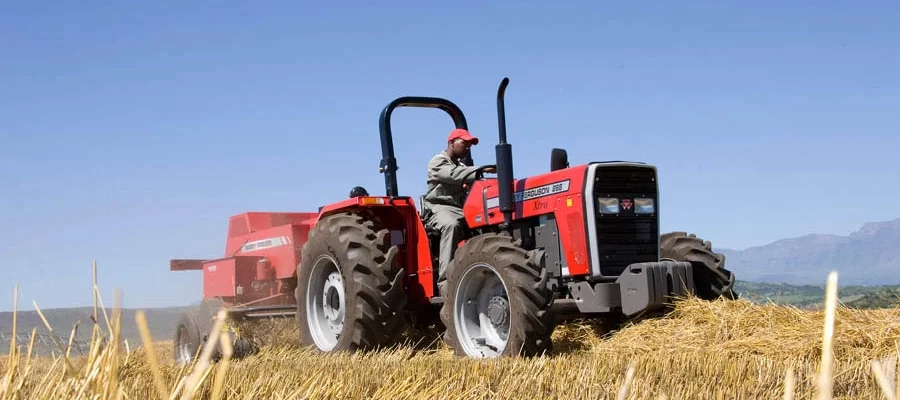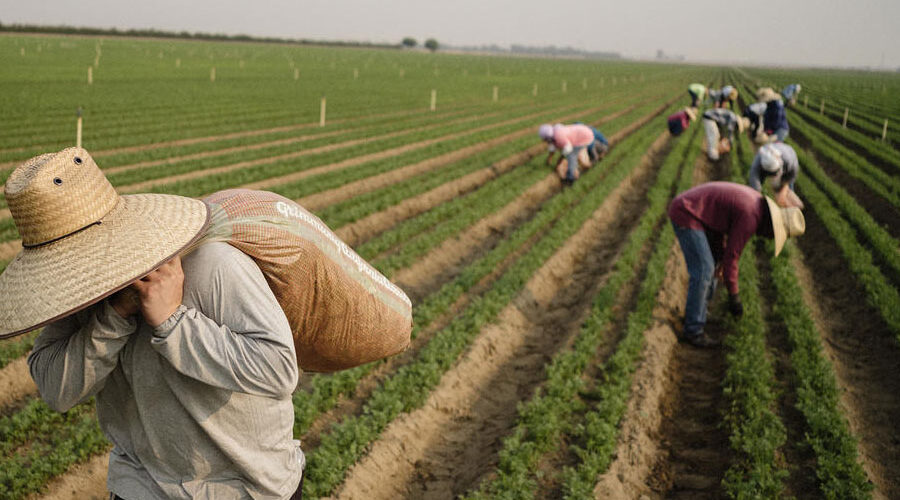
- May 28, 2025
- By: Massey Ferguson Tanzania
- in: Agricultural Machinery, Massey Ferguson Tractors

Traditionally, national governments and development partners in Tanzania’s agricultural sector have placed a disproportionate emphasis on supporting smallholder farmers. This stress is based on a number of reasons. To begin, since poverty is concentrated in rural areas, boosting production on small farms is the “quickest route” to alleviating poverty. Second, smallholder farmers are often better able to maximize land productivity due to the documented inverse link between farm size and land productivity. This holds true even when accounting for market failures in land, labor, and capital. Last but not least, smallholder agriculture is in a special position to hire people in nations where the population is expanding quickly.
It is unclear whether Tanzania is advancing or regressing along the curve of historical change. Different analysts have contradictorily claimed that the agricultural industry in Tanzania is either experiencing radical transformation or is otherwise stagnant. Tanzania’s agricultural transformation story faces serious difficulties due to the poor yield increase of most field crops. We think that developments in Tanzania are illustrative of those happening throughout Africa; therefore the insights gained by studying the country in detail may be used outside Tanzania.
Tanzania used structural adjustment measures in the 1980s to help the country make the change from a socialist to a market economy and to lower trade barriers inside the country and with the rest of the world. Food grain markets, which had been controlled by the National Milling Corporation, are now available to individual dealers, and fertilizer markets have also been opened to private providers. The private sector was not able to keep up with the pace of this change, leaving farmers without immediate support. Some argue that although export crop markets are liberalized, domestic food markets are not and that anti-liberalization attitudes are still rather strong in Tanzania. Attempts to “bring the state back in” to agricultural policy in the early 20th century included taxation and financing policies, the re-empowerment of export crop boards, and the positioning of the state as a vehicle of foreign aid-funded initiatives. A considerable percentage of the Tanzanian workforce and over a quarter of the country’s GDP is still directly or indirectly involved in agriculture today. Much of Tanzania’s agriculture is still small-scale, and undercapitalized, with a lack of agricultural machinery and labor-intensive, which contributes to the widespread perception that Tanzania is stuck in a rut.
While traditional depictions of Tanzanian agriculture focused on small-scale, subsistence-oriented farms that lacked adequate agricultural machinery and were poorly linked to input and product markets, this image has changed. This analysis shows that medium-sized farms are increasingly responsible for a growing proportion of both farmed area and agricultural output. Medium-sized farms employ a disproportionate number of farm workers because of their larger-than-average share of the farm population. As more and more family farms “step up” (transitioning to group B farms) or “step out,” the number of groups A farms (small, farm-focused, and not commercialized) is decreasing (transitioning to group C farms).
Small farms with a focus on subsistence, commercialization, and medium- and large-scale farms all benefit from the insights provided by this farm typology, which may guide agricultural policy. Food insecurity is a major problem, and as many impoverished people make their living on small farms, aid to these farmers is essential. Conversely, investments in commercially oriented farms are required to generate surpluses for urban customers as populations grow more urbanized and a higher percentage of the poor move to cities. Additionally, smallholder farmers in the area may reap significant advantages from proximity to medium-scale farms. Medium-sized farms can improve market access conditions for smaller farms because agribusinesses are more likely to invest in the region for acquiring technology farm implements and other agricultural machinery to serve them. This is because medium-sized farms produce relatively large surpluses, buy more purchased inputs, and demand extensive agricultural-related services.
While it is encouraging to see actual agricultural output rising, it is concerning that most of this production gain seems to derive from area expansion rather than yield growth. Keeping aside space for animal habitats and other environmental amenities, it is possible that there is a ceiling on total arable land, which means that increasing agricultural output in the future will have to come from increasing land productivity via technology and agricultural machinery. Another takeaway is that the pace at which better cattle breeds are adopted has remained stable or perhaps declined over the last several years. As a result, it seems that the cattle industry needs additional support in order to encourage intensification.
For mechanization and acquiring agricultural machinery, such as tractors and farm implements, in Tanzania, no one does it better than Massey Ferguson Tanzania. To help the Tanzanian economy grow, Massey Ferguson Tanzania is dedicated to improving agricultural farming methods. In light of this, Massey Ferguson Tanzania is devoted to serving the agricultural industry in Tanzania with products of the highest quality from Pakistan. Adopting modern agricultural farming practices, such as the use of automated agricultural machinery, increases a country’s ability to meet the needs of its people and increase exports.
We argue that policymakers should prioritize accommodating a wide range of farmers’ preferences because of the diversity in farm types and the fast evolution in the composition of the farming population. For instance, there may be an unmet need for automation (agricultural machinery) or agricultural loans among medium- and commercialized small-scale farms. Group A farmers, who are on the verge of subsistence, have quite different requirements. As a result, the different farming communities may have their assistance and agricultural investments carefully tailored to meet their individual goals.

Post a Comment